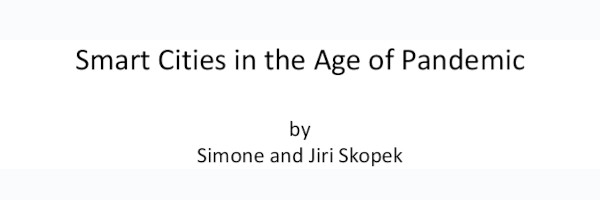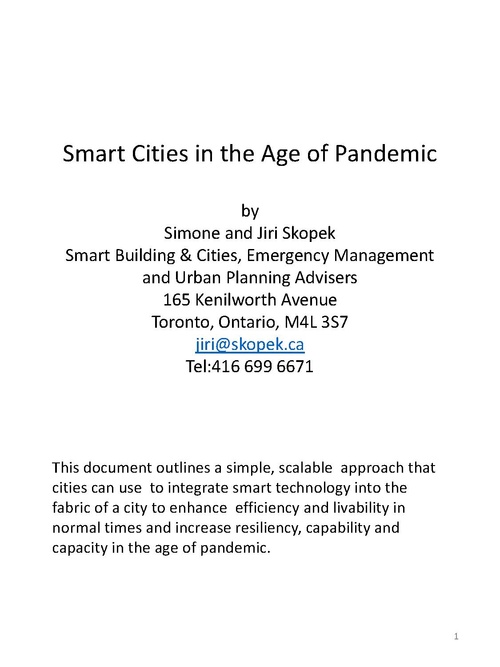Smart Cities in the Age of Pandemic: Difference between revisions
Jump to navigation
Jump to search
No edit summary |
No edit summary |
||
| Line 1: | Line 1: | ||
{{Report | |||
|Image=Smart_Cities_Pandemi.jpg | |||
|Organization=Global City Teams Challenge, NIST | |||
|poc=Jiri Skopek | |||
|Where=Toronto Canada | |||
|Summary=This document outlines a simple, scalable approach that cities can use to integrate smart technology into the fabric of a city to enhance efficiency and livability in normal times and increase resiliency, capability and capacity in the age of pandemic. | |||
|sector=Wellbeing | |||
|chapter=Quality of Life | |||
|Release=Smart_Cities_in_the_Time_of_Pandemic_public.pdf | |||
}} | |||
{{COVID-19 | {{COVID-19 | ||
Revision as of 05:32, January 25, 2023
| Report | |
|---|---|
| Image | 
|
| Published | |
| Point(s) of Contact | Jiri Skopek |
| Organization(s) | Global City Teams Challenge NIST |
| Where | Toronto Canada |

| |
This document outlines a simple, scalable approach that cities can use to integrate smart technology into the fabric of a city to enhance efficiency and livability in normal times and increase resiliency, capability and capacity in the age of pandemic.
| Smart Cities in the Age of Pandemic | |
|---|---|

| |
 Smart Cities in the Time of Pandemic public | |
| Team Organizations | Buildings |
| Team Leaders | Jiri Skopek Simone Skopek |
| City, State | Toronto Ontario Canada |
| Contributors | Jiri Skopek |
| Website | |
| Document | Download |
Description
This document outlines a simple, scalable approach that cities can use to integrate smart technology into the fabric of a city to enhance efficiency and livability in normal times and increase resiliency, capability and capacity in the age of pandemic.